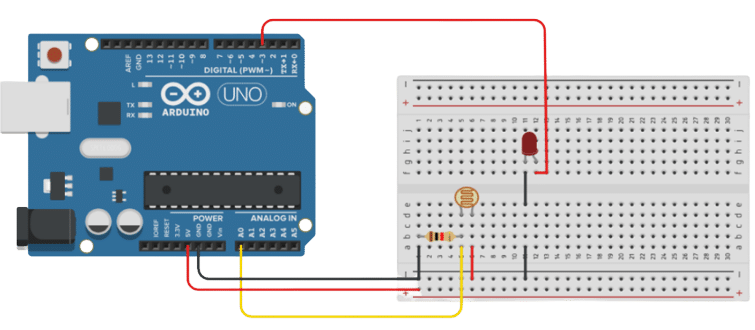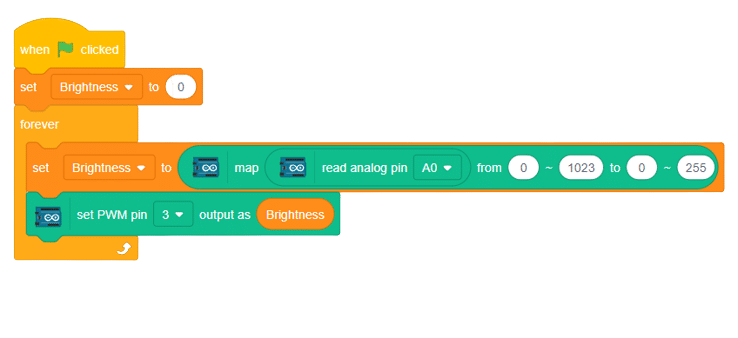Potentiometer and It’s working
A potentiometer is a versatile three-terminal resistor that forms an adjustable voltage divider or variable resistor (rheostat). It consists of two terminals connected to a resistive element and a third terminal connected to an adjustable wiper. The potentiometer can vary the amount of resistance in the circuit based on the wiper’s position.

Circuit Diagram

Code
- Create a variable called “brightness” and set it to 0.
- Add the “forever” block from the control palette.

- Use the “map” block from the Arduino palette to convert the range of values (0-1023) to the desired range (0-255) for brightness control. Read the values from Arduino pin A0 and place them in the first space of the map function.

- Set the brightness variable to the mapped value using the “set brightness to” block.
- Use any PWM pin of the Arduino to connect an LED.

- Set the PWM value to the brightness variable.

- Add these two blocks inside the forever block.
- Finally, add when flag clicked event to complete the script.

Script









